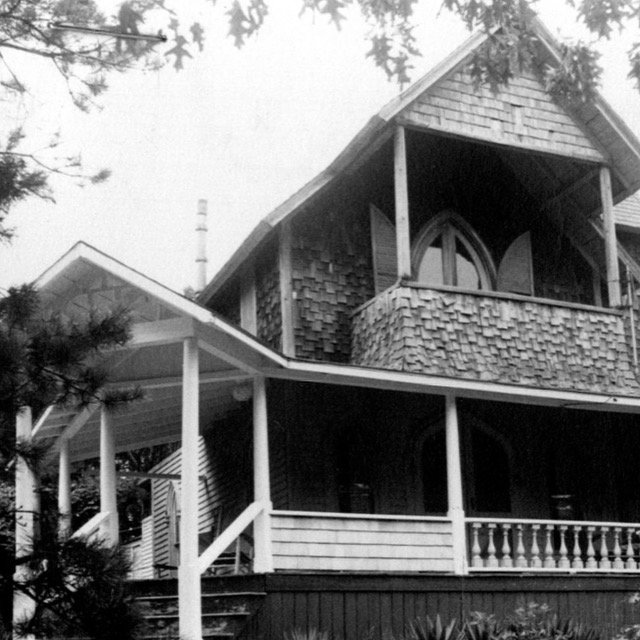The cottage was built in 1887 by Thomas Greenleaf Hiler, Jr., (November 30, 1827- April 12, 1924) in the Northern Gothic style at what was originally named 144 Wesley Park Road. In a document prepared on October 18, 1978 by the Massachusetts Historical Commission (MHC), the home was renovated in 1891 to add the “[master bedroom] tower, dormer window, and piazza with hoods.” Hiler, his wife Mary Jane Clark, and their children Grace and Ernest used the cottage each summer as an extension of the Oak Bluffs Camp Meeting Association.
East Chop has traditionally been referred to as “The Highlands,” given that it is the highest land in the area, overlooking Vineyard Sound. The house is situated a short walking distance from the Oak Bluffs Camp Meeting Association (MVCMA), the “gingerbread village” on the island.
Our cottage is named in honor of Booming Ben, a male heath hen of the same name, who was the last of his species on earth. Heath hens prospered on the island for generations, but eventually were hunted nearly to extinction. By the early 1900s, only a small population remained. In 1916, a bush fire on the island decimated the heath hens’ natural grassland habitat, and destroyed most of the surviving population. Of the few surviving birds, all but Ben had died by 1928. Booming Ben was last seen on March 11, 1932, after he’d spent years alone, loudly calling (“booming out”) for a mate.
If you’re curious, you may visit a sculpture made by artist Todd McCrain in the place where Ben was last seen. The Martha’s Vineyard Museum hosts a Heath Hen Day annually on March 11.

